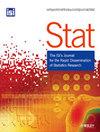与统计学家合作愉快:执业统计学家对其最成功合作的看法
IF 0.8
4区 数学
Q3 STATISTICS & PROBABILITY
引用次数: 0
摘要
统计合作要求统计人员与非统计人员进行有效的合作与交流,而由于多种原因,这可能具有挑战性。为了找出与非统计学家合作者顺利开展工作的共同主题和经验教训,我们召开了两个主要由学术合作统计学家组成的焦点小组会议。我们找出了往往会产生丰硕成果的合作关系的特质,以及往往会一无所获(或者更糟糕,一方或双方都不满意)的合作关系的特质。最初的目标是分享有用的知识和个人经验,以促进在学术统计合作单位工作的统计人员建立更成功的合作关系。我们利用这些发现设计了一项后续调查,以收集更多从业统计人员对评估潜在合作关系时应考虑的重要品质的看法。在这项针对从业统计人员的调查中,我们发现大家普遍认为,许多好的品质和坏的品质分别值得提倡和反对。有趣的是,对一些消极和积极的合作品质的认同度较低,这表明在这种情况下,将领域专家与统计人员混合搭配的方法可以减轻团队科学环境中的摩擦和统计人员的职业倦怠。教职员工对某些合作特征的重要性认识不同,而其他特征则取决于经验。本文章由计算机程序翻译,如有差异,请以英文原文为准。
Working well with statisticians: Perceptions of practicing statisticians on their most successful collaborations
Statistical collaboration requires statisticians to work and communicate effectively with nonstatisticians, which can be challenging for many reasons. To identify common themes and lessons for working smoothly with nonstatistician collaborators, two focus groups of primarily academic collaborative statisticians were held. We identified qualities of collaborations that tend to yield fruitful relationships and those that tend to yield nothing (or worse, with one or both parties being dissatisfied). The initial goal was to share helpful knowledge and individual experiences that can facilitate more successful collaborative relationships for statisticians who work within academic statistical collaboration units. These findings were used to design a follow‐up survey to collect perspectives from a wider set of practicing statisticians on important qualities to consider when assessing potential collaborations. In this survey of practicing statisticians, we found widespread agreement on many good and bad qualities to promote and discourage, respectively. Interestingly, some negative and positive collaboration qualities were less agreed upon, suggesting that in such cases, a mix‐and‐match approach of domain experts to statisticians could alleviate friction and statistician burnout in team science settings. The perceived importance of some collaboration characteristics differed between faculty and staff, while others depended on experience.
求助全文
通过发布文献求助,成功后即可免费获取论文全文。
去求助
来源期刊

Stat
Decision Sciences-Statistics, Probability and Uncertainty
CiteScore
1.10
自引率
0.00%
发文量
85
期刊介绍:
Stat is an innovative electronic journal for the rapid publication of novel and topical research results, publishing compact articles of the highest quality in all areas of statistical endeavour. Its purpose is to provide a means of rapid sharing of important new theoretical, methodological and applied research. Stat is a joint venture between the International Statistical Institute and Wiley-Blackwell.
Stat is characterised by:
• Speed - a high-quality review process that aims to reach a decision within 20 days of submission.
• Concision - a maximum article length of 10 pages of text, not including references.
• Supporting materials - inclusion of electronic supporting materials including graphs, video, software, data and images.
• Scope - addresses all areas of statistics and interdisciplinary areas.
Stat is a scientific journal for the international community of statisticians and researchers and practitioners in allied quantitative disciplines.
 求助内容:
求助内容: 应助结果提醒方式:
应助结果提醒方式:


